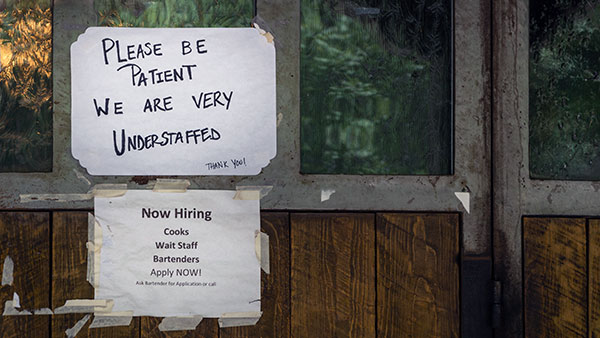Managing hiring risks during labor shortages

Employers make tough workforce decisions.
Many business owners are facing labor shortages made more acute by the coronavirus pandemic. As employers look to hire workers, they struggle to answer tough questions: Do I settle for less qualified candidates? Can I reduce screening to widen the candidate field? Can I rely on contractors and third parties to fill labor gaps?
When you must make these tough decisions, focus on best personnel practices and be aware of the ramifications of your hiring decisions. Skimping on workplace standards can lead to exhausted, overworked employees and drivers, safety lapses and extra risk to your employees, customers and business reputation.
NEW EMPLOYEE SELECTION
Keep up your standards for employee screening. While it may be tempting to eliminate pre-employment and post job offer drug testing, the risks are very high and can lead to catastrophic losses or injuries. It is important to maintain all Drug Free Workplace programs and enforce them with your management team. A reduction in pre-screening could mean serious consequences for your customers, product quality and other employees. Consult with legal counsel to ensure compliance with all state and federal laws regarding drug testing and background checks
Consider partnering with a temporary agency to add to your workforce. This can provide long-term cost savings and reduce some risk exposures. Hiring temps allows you time to vet individuals you may later hire as associates.
Continue your use of background checks. Background reports may uncover gaps in employment applications and provide information you need to pursue during the interview process.
Remember to collect motor vehicle reports. MVRs are essential for employees who drive your company vehicles.
NEW EMPLOYEE OVERSIGHT
Require new employees to check in with their managers at the beginning of each shift. A face-to-face interaction before work begins allows a manager to evaluate the state of the employee as soon as the shift begins, so that any concerns can be addressed immediately. This is critically important if employees will operate equipment, leave the site or drive during their shift for any reason.
TRAINING AND DOCUMENTATION
Maintain training standards for all positions. Businesses may be forced to use employees in new positions to fill gaps, so now is not the time to ignore cross-training. Insufficient training can risk dangerous mistakes, slowed service, delayed delivery or late project completion.
MANAGEMENT AWARENESS
Ensure all management has received “reasonable suspicion” training. If it has been some time since the last training, refresher training is important. Make sure managers brush up on how to identify someone who is impaired or under the influence as well as how to handle a suspected case.
PROCESS MODIFICATIONS
Consider how the work is completed in your business. Could changing work processes mean that fewer employees are needed? Evaluate whether automation, robotics or outsourcing could help make up for the lack of qualified employees.
Attention to these employment practices can help you ensure a healthy and safe workforce.
This loss control information is advisory only. The author assumes no responsibility for management or control of loss control activities. Not all exposures are identified in this article. Contact your local, independent agent for insurance coverage advice and loss control information. Neither The Cincinnati Insurance Company nor its affiliates or representatives offer legal advice. Consult with your attorney about your specific situation.




